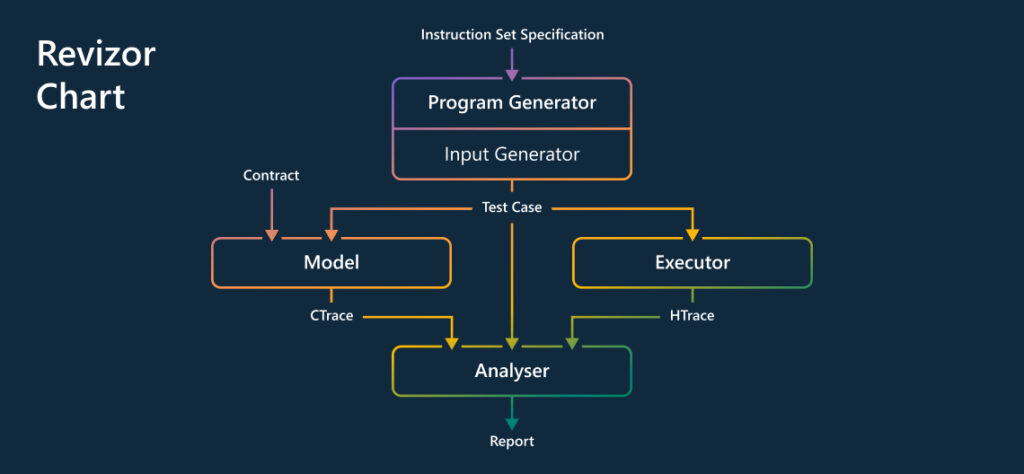
Spectre and Meltdown are two security vulnerabilities that affect the vast majority of CPUs in use today. CPUs, or central processing units, act as the brains of a computer, directing the functions of its other components. By targeting a feature of the CPU implementation that optimizes performance, attackers could access sensitive data previously considered inaccessible.
For example, Spectre exploits speculative execution—an aggressive strategy for increasing processing speed by postponing certain security checks. But it turns out that before the CPU performs the security check, attackers might have already extracted secrets via so-called side-channels. This vulnerability went undetected for years before it was discovered and mitigated in 2018. Security researchers warned that thieves could use it to target countless computers, phones and mobile devices. Researchers began hunting for more vulnerabilities, and they continue to find them. But this process is manual and progress came slowly. With no tools available to help them search, researchers had to analyze documentation, read through patents, and experiment with different CPU generations.
A group of researchers from Microsoft and academic partners began exploring a method for systematically finding and analyzing CPU vulnerabilities. This effort would produce a tool called Revizor (REV-izz-or), which automatically detects microarchitectural leakage in CPUs—with no prior knowledge about the internal CPU components. Revizor achieves this by differentiating between expected and unexpected information leaks on the CPU.
Spotlight: Microsoft Research Podcast
AI Frontiers: The Physics of AI with Sébastien Bubeck
What is intelligence? How does it emerge and how do we measure it? Ashley Llorens and machine learning theorist Sébastian Bubeck discuss accelerating progress in large-scale AI and early experiments with GPT-4.
The Revizor process begins by describing what is expected from the CPU in a so-called “leakage contract.” Revizor then searches the CPU to find any violations of this contract. It creates random programs, runs them on the CPU, records the information they expose, and compares the information with the contract. When it finds a mismatch that violates the contract, it reports it as a potential vulnerability.
Details were published in 2022 in the paper: Revizor: Testing Black-box CPUs against Speculation Contracts.
To demonstrate Revizor’s effectiveness, the researchers tested a handful of commercial CPUs and found several known vulnerabilities, including Spectre, MDS, and LVI, as well as several previously unknown variants.
However, the search was still slow, which hindered the discovery of entirely new classes of leaks. The team identified the root causes of the performance limitations, and proposed techniques to overcome them, improving the testing speed by up to two orders of magnitude. The improvements are described in a newly published paper: Hide and Seek with Spectres: Efficient discovery of speculative information leaks with random testing.
These improvements supported a testing campaign of unprecedented depth on Intel and AMD CPUs. In the process, the researchers found two types of previously unknown speculative leaks (affecting string comparison and division) that had escaped previous analyses—both manual and automated. These results show that work which previously required persistent hacking and painstaking manual labor can now be automated and rapidly accelerated.
The team began working with the Microsoft Security Response Center and hardware vendors, and together they continue to find vulnerabilities so they can be closed before they are discovered by hackers—thereby protecting customers from risk.
Revizor is part of Project Venice, which investigates novel mechanisms for the secure sharing and partitioning of computing resources, together with techniques for specifying and rigorously validating their resilience to side-channel attacks.
The post Hunting speculative information leaks with Revizor appeared first on Microsoft Research.

